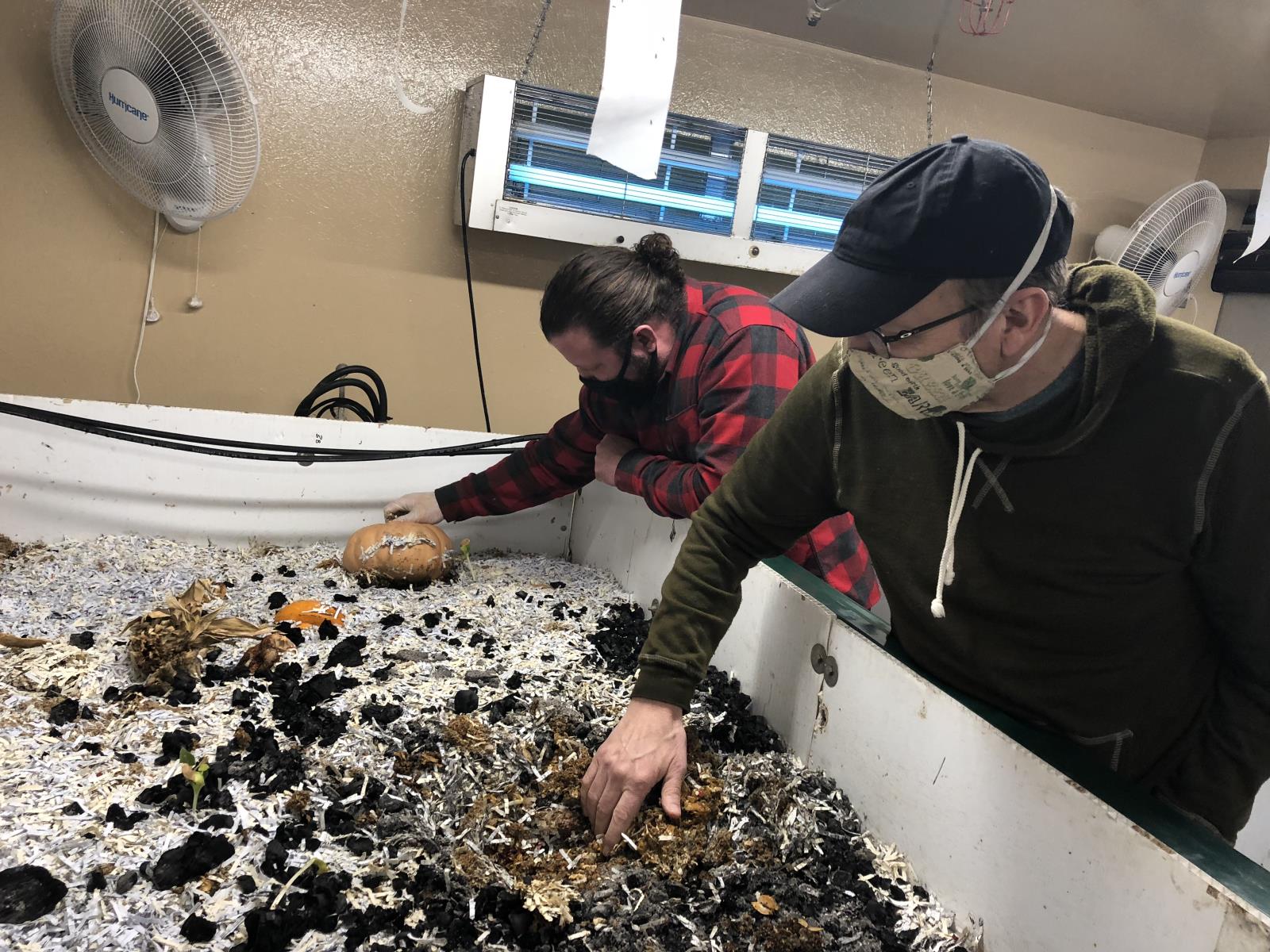Farming worms in downtown Boise

By Sean Ellis
Idaho Farm Bureau Federation
BOISE – A restaurateur in downtown Boise has been “farming” worms for 16 years as a way to reduce food waste.
Urban Worm, established in 2005 and located in a basement in the heart of downtown Boise, feeds food waste to thousands of red wiggler worms, which turn the waste into worm castings that are sold at farmers markets as organic fertilizer to home gardeners.
The food waste comes from Bittercreek Alehouse, Diablo and Sons and Red Feather Lounge, three eateries owned by Dave Krick.
The worms, which are housed in two bins that are each eight feet long, four feet wide, and two feet deep, are fed vegetable scraps and other produce waste, as well as spent grains from a pilot beer brewery. They consume the waste and turn it into worm castings.
“We’re farming worms,” Krick says. “It’s like livestock; we’re feeding them food waste and they’re eating it and” turning it into a product.
Over the course of the week, the food waste is collected from the eateries and placed in a giant trash bin. It is then run through a special machine that mulches the food with water to make a type of food waste slushy. The slushy then goes into a dehydrator, which shoots out confetti food particles that are ready to be digested by the worms.
The food is put into the bins, which contain thousands of worms each and are set up as a flow-through system. The worms are fed from the top of the bins and the castings are harvested off the bottom of the bins, which have screens on a roller-blade system that allows the castings to be shaved off before the screens are rolled back into place.
“We just put the food waste right on top and let the worms go to town on it,” says Nick Baltes, one of the restaurants’ senior managers who oversees the worm farm. “Worm casting compost is one of the best you can get out there and it’s highly prized among gardeners.”
As much as 200 pounds a week of worm castings can be produced in the bins, which are kept in the basement below the three eateries, which are located on 8th Street in downtown Boise.
The bins were custom-made and each one is filled with thousands of red wigglers, which are a type of earthworm commonly used in composting. The worms’ only mission in life is to eat and they do that well, Baltes says.
“They’re just eaters,” he says. “They eat and eat and eat and excrete and excrete and excrete. That is literally all that they do.”
Several of the restaurants’ employees over the years have been responsible for maintaining the worm farm and one actually wrote a 70-page manual on how to run the operation.
While the worm castings are sold, the worm farm is not a money-making operation, Krick says. The main goal behind the worm farm is to be ecologically responsible by reducing the amount of food waste heading to the landfill.
“We have joked over the years that we don’t know why we’re doing this,” he says. “We do it because it’s the right thing to do.”
For the amount of work put into the worm farm and the amount of food waste that is saved from going to the landfill, the operation is probably not doing a huge world of good in the grand scheme of things, Krick says.
“But it’s just a good example of what we could do,” he says. “We feel really good about it, our staff feels really good about it, we know that we’re trying to do the right thing and so that keeps us going.”
Before COVID-19 hit, Krick said, the restaurants also hosted tours for local schools and used the worm composting operation as a tool to teach students about soil diversity and the importance of recycling food waste.
He said the restaurants also took the opportunity to feed the kids lunch while teaching them about where their food really comes from “and how we complete that cycle by returning the waste back to the farmer, or gardener.”
“This was never a planned part of our (worm) composting operation, but it’s probably the biggest motivator to continue to invest in our system,” Krick said.
Still can't find what you are looking for? Find by topic:
- Achievement Award (YF&R)
- Actions Alerts
- Advocacy
- Ag Ambassadors
- American Farm Bureau
- American Farm Bureau Policy Book
- Archive Photos
- Articles
- Board of Directors
- Calendar - State/District
- Calendar - County
- Capitol Reflections
- Collegiate Chapters
- Committee Application Form
- Commodities
- Convention Annual
- County Presidents & Board Information
- County Resource Page
- Delegate Form
- Discount Programs
- Discussion Meet
- Discussion Meet - High School
- Education Programs
- Events
- Excellence Award (YF&R)
- Expense Voucher
- Flickr
- Gem State Producer
- High School Discussion Meet
- High School Speech Contest
- Hope in Idaho Ag
- House of Delegates Credentials Form
- IFBF Board of Directors
- IFBF Policy Book
- IFBF Staff
- Insurance
- Legislative Action Program
- Legislative Issues
- Library
- MAC Trailer
- Magazines
- Map My Benefits
- Member Benefits
- Member Discount
- Membership Application
- Mission Statement
- Moving Agriculture to the Classroom
- Newsletter Sign up
- News Releases
- News Room
- Open Range Law
